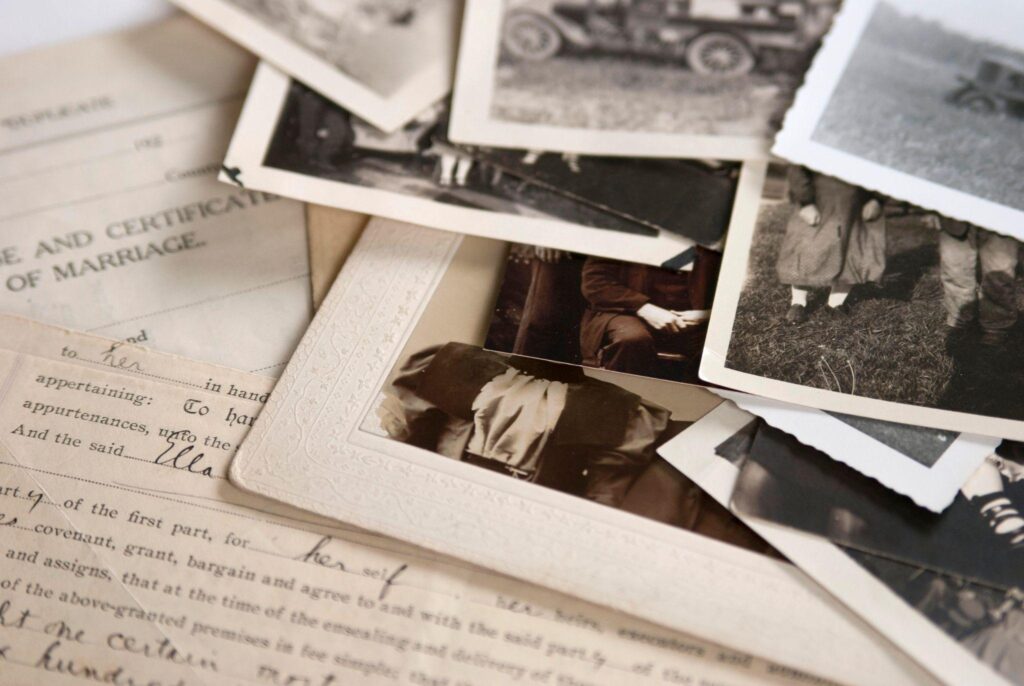8 Tips to Help You Research Family Ancestry & Create a Family Tree
8 Tips to Help You Research Family Ancestry & Create a Family Tree

Researching your Italian genealogy can be a fun project for the entire family, but it’s also more than that. Going through genealogy websites and sifting through vital records might even lead to the discovery that you and your family are entitled to Italian citizenship, due to Italy’s generous citizenship laws.
Whether it’s for a family bonding project or you want to figure out where you might belong in life, here’s how to research Italian familial records to piece together your Italian family history.
1. Interview Family Members of Italian Origin
Your relatives are some of the best Italian genealogy resources available to you. Create a list of interview questions to ask family members. Although some members of your family may not know much, they can help supplement information and fill gaps.
2. Explore Family Tree Building Websites
Utilize online resources like Ancestry.com and FamilySearch.org to access a vast array of Italian birth records, death records, and marriage records. Naturalization records are a treasure trove of information about your Italian ancestors. Particularly for those issued after 1906, these documents can provide crucial details such as the specific town or region in Italy from where your ancestors immigrated.
Naturalization papers often include other valuable information like arrival dates, ships’ names, and sometimes even personal details that can guide you to further records or insights. They serve as an excellent starting point for understanding your family’s journey to America and tracing their roots back to Italy.
Also, explore the Antenati website, which offers historical documents from Italian state archives.
3. Don’t Overlook the Power of Social Media
Many Facebook groups and forums are dedicated to Italian genealogy, offering a platform for advice and connecting with others exploring their Italian roots. Patience is key in navigating these resources, but the discoveries made are invaluable in tracing your family’s history.
4. Understand Italian Naming Traditions
Understanding Italian naming traditions can unlock significant clues in your genealogical search. Italian families often followed a pattern of naming children after their grandparents, a practice that can help identify familial connections across generations.
Additionally, surnames were frequently derived from paternal names (patronymic) or maternal names (matronymic), occupations, or geographical locations, providing insights into your ancestors’ lives and origins. Recognizing these naming conventions is crucial in tracing lineage and understanding family relationships in your Italian heritage research.
5. Explore Libraries, Churches, and Records Centers

For a more in-depth exploration of your Italian heritage, make sure to visit public libraries and contact records centers. Libraries often house historical documents, genealogical collections, and knowledgeable staff who can guide your research.
Additionally, don’t overlook the wealth of information stored in church archives. The Catholic Church, predominant in Italy, has maintained vital records like baptism, marriage, and death certificates, some of which date back to the 15th century. These church records can be indispensable in filling gaps in your family history.
In parallel, investigating Italian government records can also yield valuable insights. Many Italian municipalities maintain detailed civil records that are essential for genealogical research.
6. Learn Basic Italian Genealogical Terms
Starting with a basic understanding of Italian genealogical terms is essential in your family history research. Familiarize yourself with key terms like “nato/a” (born), “morte” (death), “matrimonio” (marriage), “genitori” (parents), and “figlio/a” (son/daughter), as well as terms related to dates, places, and occupations. This knowledge is invaluable when navigating through Italian records and helps in making preliminary interpretations.
7. Find a Service to Translate Italian
As you delve deeper into your research and start obtaining records from Italy, the complexity of the documents might increase, often requiring a more nuanced understanding of the language and context. This is where the services of a professional translation company become crucial. These experts not only translate the text but also understand the cultural and historical nuances that are often key to accurate interpretation.
Engaging with a trusted translation service ensures that the subtleties and details in your Italian documents are accurately conveyed, allowing you to fully comprehend and correctly integrate this information into your family history. Such services bridge the linguistic gap, ensuring no detail is lost in translation, and thus, enriching the depth and accuracy of your genealogical research.
8. Work with Experts in Italian Genealogy Resources
There are professional services that will help you with Italian genealogy research, but many of them charge a high fee and some don’t offer the care and professionalism you need in such an important journey. The Italian American Citizenship Assistance Program (ITAMCAP) will provide you with a family research report created by a board-certified genealogist free of charge to see if you do qualify for citizenship, as well as advise you on next steps.
We’ll ensure we don’t steer you wrong, keeping you educated on the process and your history as you go.
Trace Your Italian Ancestry Today with ITAMCAP

Searching for Italian records can be the most challenging part of researching your Italian genealogy, especially if you aren’t sure where to start. That’s why ITAMCAP makes it easy, providing a full family report even if you don’t qualify for Italian citizenship.
If you do qualify for Italian citizenship and would like to pursue things further, however, we can help even more. ITAMCAP can help with every step of the process, from gathering together all of your vital records to apostilling your documents so they’re valid in Italy. There are a million Italians who may not even know they’re Italian yet, unaware of how we can help.
Unlock your family’s heritage and opportunities by taking advantage of ITAMCAP services to obtain dual citizenship today!

